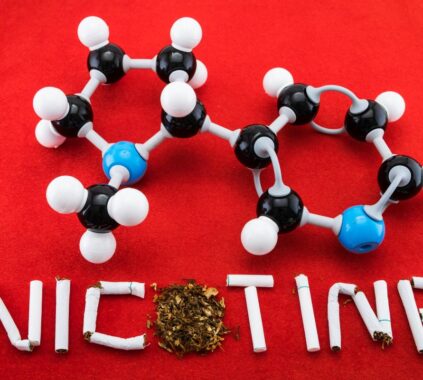Teenage smoking continues to be a significant public health concern with far-reaching effects on individuals and society. Adolescence is a crucial stage in brain development characterized by increased flexibility and susceptibility to outside factors. Teenagers who smoke may be especially vulnerable to nicotine’s harmful effects on the brain’s structure and function. This in-depth investigation intends to explore the brain variations seen in adolescent smokers and give information on the potential neurological effects of tobacco use.
Learning About Teen Smoking
Peer pressure, the home environment, financial position, and how smoking is portrayed in the media are just a few of the complicated elements that impact teen smoking. Many teenagers still start and maintain smoking addictions despite significant attempts to reduce tobacco use among this group. As researchers work to identify the factors contributing to teenage smoking start and continuation, the neurological bases of such behavior are a developing field of study.
Nicotine’s Neurological Effects
The primary psychoactive component in tobacco, nicotine, works by attaching to nicotinic acetylcholine receptors (nAChRs) in the brain to produce its effects. These receptors, widely dispersed throughout the central nervous system, are essential for cognitive functions like memory, learning, and attention. Dopamine is released in the brain’s reward system when nicotine binds to nAChRs, producing pleasurable sensations and reinforcement.
The interaction between nicotine and nAChRs in the developing teenage brain can impair normal neurotransmitter signaling and synaptic connections. Nicotine use throughout adolescence has been linked to altered synaptic plasticity, impaired cognitive performance, and an increased risk of addiction in later life, according to studies in animal models. Furthermore, nicotine-related adjustments to the reward system may help explain why teenagers’ smoking behavior persists and becomes a hard-to-break habit.
Methodology
A sample of teenagers aged 14 to 18 who smoke and don’t smoke was gathered for this extensive study from nearby schools and community centers. Participants underwent a thorough screening process to guarantee fair representation of both genders, a range of socioeconomic backgrounds, and different smoking habits. Several evaluations were performed on each participant, including self-report surveys, cognitive tests, and neuroimaging scans.
Results
The findings of this study showed that teenage smokers and non-smokers had significantly different brain morphologies and functions. Magnetic resonance imaging (MRI) and other neuroimaging scans offered essential insights into these variations.
1. Structural Changes:
Teenage smokers showed structural changes in their brains, particularly in the prefrontal cortex and other cognitive control and decision-making areas. Grey matter volume reductions were seen in these regions, raising the possibility that impulse control and emotion regulation may have been affected.
2. Functional MRI (fMRI):
Functional MRI (fMRI) scans revealed different patterns of brain activity in the two groups, which is reason number two for the functional differences. Teenage smokers showed increased reward circuitry activation in response to smoking-related signals, demonstrating an increased sensitivity to nicotine-related stimuli. Furthermore, compared to non-smokers, their cognitive performance in attention and memory tests was impaired.
3. Connectivity Disruptions:
In the default mode network engaged in self-referential thinking and mind-wandering, resting-state fMRI revealed altered connectivity patterns. Teenage smokers may struggle with focus and introspection because of these connectivity interruptions.

Discussion
The results of this extensive study highlight the complex link between teen smoking and brain development. Teenage smoking may have long-term effects on cognitive performance and emotional control, as evidenced by the anatomical and functional variations in their brains.
Teenage smokers’ more sensitive reward systems may help them develop smoking habits, and their cognitive deficiencies may affect their academic success and general well-being. Additionally, the changes in brain connectivity may influence a teen’s capacity to negotiate challenging social and emotional situations successfully.
Intervention Implications
A foundation for creating focused interventions to reduce smoking initiation and assist quitting efforts is laid out by understanding the brain mechanisms behind teenage smoking. For adolescents, educational programs that emphasize the neurological effects of smoking could be very effective deterrents. Additionally, programs for improving cognitive function and impulse control may help lessen the damaging effects of nicotine on the growing brain.
Conclusion
The extensive research on the changes in teen smokers’ brains provides insight into the complex relationship between nicotine exposure and adolescent brain development. The results highlight the need for efficient methods to discourage teens from starting to smoke and to encourage them to do so. Society may make tremendous progress by addressing the neurological effects of early cigarette use to protect its youngest members’ cognitive and emotional health.
Last modified: September 13, 2023






